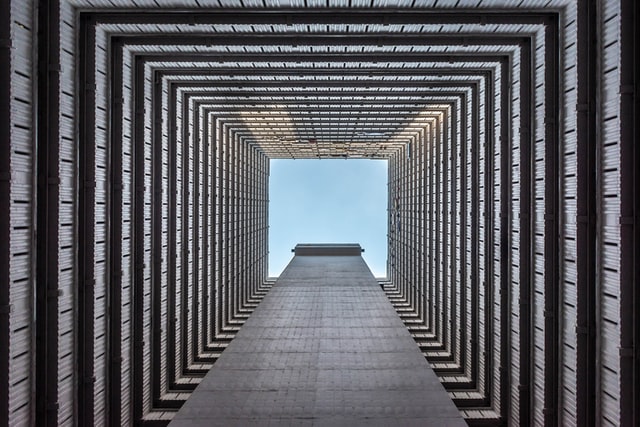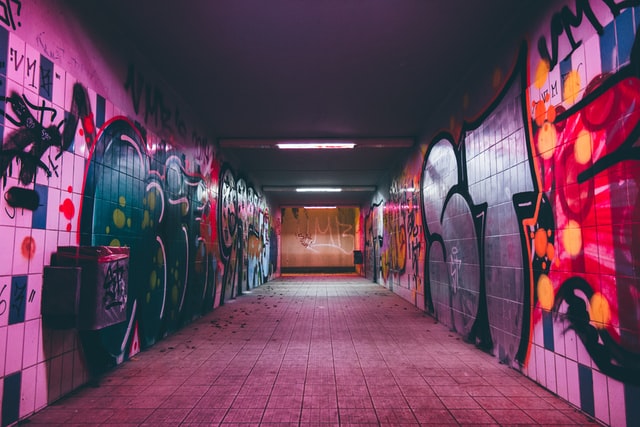| Agenda | Chairs | Working groups | Photogallery |
Broken Cities is the first Feltrinelli Camp 2021, organised in collaboration with national and international universities and research centres, as well as with institutional stakeholders of Fondazione Giangiacomo Feltrinelli. It is the cycle of workshops that concluded the season of research activities – Sarabanda 2021. Three different thematic workshops were held in the last quarter of 2021.
Broken Cities intends to examine the challenges, vulnerabilities and opportunities that our cities and territories are facing from an ecological, social and economic perspective, the latter two particularly exacerbated by the pandemic. The workshop aims to contribute to rethinking models and practices that can play a key role in the creation of a shared, and no longer fragmented, space that includes heterogeneous identities and promotes sustainable lifestyles and healthy communities.
In partnership with

Heal the broken city by reconciling socio-economic cleavages
Agenda
After more than a year of the pandemic, European cities appear broken. Over recent decades, exasperated by the recent pandemic, cities across the world have become more vulnerable, their deficiencies in being able to guarantee a fair social and economic development increasingly palpable.
The cities are broken under many aspects: a lack of adequate services, a lack of access to housing, the physical isolation that, from being a measure of containment of the virus has now consolidated into a lifestyle, loss of work, areas of cities that are ailing, degraded and abandoned. We know that broken cities are not fertile lands for a collective well-being, creating hubs of social injustice, replications of ineffective models of governance and an unhealthy approach to the environment. In Europe, cities are being challenged with the impact of climate change alongside an exacerbation of social inequalities: it is in cities that social, environmental and economic emergencies become increasingly visible, but it is also in cities that new solutions emerge.
Fundamental rights are now at risk of being relegated to the second, if not the last row in the classroom of priorities in urban contexts. Many historic cities are collapsing under the weight of their immobility: both for lack of funds and for an inability or unwillingness of those who govern the cities to implement transformations. At the same time, non-urban areas are suffering from widespread abandonment resulting from a lack of social infrastructure and services that challenge the ability of territories to maintain their attraction.
How to recompose cities as places of opportunities for citizens, communities, territories?
It’s clear that our broken cities need to be repaired, re-designed and healed in their spatial, social and economic spheres. We need a transformation, in our approach and practices, that invests cities from many points of view in order to develop the territories as places of opportunities: more participation in urban planning, more health environments, more project management skills to guide the cities’ development, more and better-designed services and more connection between and for people. We need to tackle socio-economic and environmental injustices and start to reconcile the social, economic and environmental gaps.
In order to figure out how to fill these social and environmental gaps, we need to focus on strategic questions. What does the right to the city mean today? How can we put this right in practice in our cities? How can we turn cities into tangible places of opportunity for all? How can we promote participatory processes both in urban and non-urban territories? How can we guarantee principles of inclusivity and democracy in the socio-ecological transition, to make it real and tangible instead of empty and ephemeral?
The Feltrinelli Camp intends to contribute to rethinking models and practices that can play a key role in the creation of a shared space, no longer fragmented, that includes heterogeneous identities and promotes sustainable lifestyles and healthy communities.
Sustainable mobility in future cities
The Broken Cities Camp is inspired by the awareness that cities are facing social and environmental challenges that need long term, well planned and responsibly-managed solutions: a complex and multifaceted rethinking of cities and territories for a new alternate proposal has become an unavoidable imperative, and we count on participants to the Broken Cities Camp to share this urge of civic commitment.
This approach needs to consider a transition to new socio-economic models that on the one hand promote sustainable and democratic economies and on the other hand contribute to the health and wellbeing of people and territories, enhancing participatory strategies. Furthermore, we need to interrogate ourselves as to what the kind of cities and territories we want, and how to develop cities and territories as desirable places to be lived in.
At the Feltrinelli Camp, researchers, activists and practitioners in the relevant sectors will discuss a set of practical actions that make it possible to develop just, health and participatory territories, designed through a co-project management between Public Administrations and stakeholders.
Exploring challenges and possible solutions for territorial development, the Feltrinelli Camp seeks to outline the form and substance of a new model of planning and living systems, creating social inclusion and healthy communities.
Proposals for the City to come
Reports from the working group chairs
What measures can be taken to guarantee the right to housing for all? Which case studies, models and practices should we consider? \
Emanuele Belotti, Università IUAV Venezia

The global eruption of the mortgage market crisis in 2007 (Gotham 2009) has revealed the centrality acquired by housing in the current finance-led regime of accumulation (Aalbers & Christophers 2014), exposing the dramatic social consequences of inherent processes of housing commodification and financialisation (Madden & Marcuse2016). The urban housing crises that unfolded in the aftermath of the 2007 financial crisis led to a surge of evictions and homelessness (Desmond 2016), which has extended globally and up to the present as a ‘silent social tsunami’ (Soederberg 2018). The housing crisis in Europe gave rise during the 2010s to a wave of housing rights movements that took action against housing deprivation (see for instance the Spanish case: Garcia-Lamarca 2017). this did not inspire any paradigm shift at the European level. Scholars have rather emphasised how rental housing has become an emerging frontier for finance within and beyond the financial crisis (Fields 2017), unveiling the increasing prominence of corporate landlordism in Europe (Beswick, Alexandri, Byrne, Vives-Miró, Fields, Hodkinson & Janoschka 2016). The state enabled and boosted equity investments in domestic rental-housing sectors through de-regulation (Fields & Uffer 2016), large-scale sale subsidized housing (i.e. in Germany; Wijburg, Aalbers & Heeg2018), or promoting vehicles that absorbed distressed property assets from the banks and resold them to global corporate landlords (i.e. in Ireland; Waldron 2018). In contrast, inadequate efforts have been made to improve housing affordability, while the long-term effects of the covid-19 pandemic are expected to dramatically exacerbate the impacts of rental housing financialisation (i.e. rent increase, eviction, and displacement).
Italy is no exception to these dynamics.
Since the end of WWII, the national government has fostered the mass access to owner-occupation, whereas direct and indirect incentives (i.e. tax advantages, ‘agreed housing’ schemes, gradual divestiture of public social-rented housing, and regularisation of unauthorised housing self-production via building amnesties) gave rise to a homeownership-dominated housing system (Allen, Barlow, Leal, Maloutas, Padovani, 2004). In 1992, the liberalisation of the mortgage market further sped up growth in homeownership, aggravating the residualism of the rental-housing sector. The abolition of rent control simultaneously triggered an increase in rental cost, which, in two decades, grew 105% in cities (Cittalia 2010). Moreover, funding freezes for public housing production and the sale of about 22% of public dwellings (Federcasa 2015) led to a decline in the already marginal public social-rented housing supply, which currently amount to about 4% of the overall residential stock (against an European average of 13%; Braga & Palvarini 2013). The combined effect of lower mortgage interest rates, increasing rent prices and lack of social-rented housing thus ended up emphasising the nature of market rental housing as a forced solution for low-income households who are not able to access mortgage credit. Not by chance, the distribution of tenure by equivalent income quintile indicates that the highest share of households in rental housing were found in the poorest quintiles (ISTAT 2017). Against this backdrop, the eruption of the financial crisis unsurprisingly led to a dramatic increase in evictions, where the number of annual possession orders grew from 40.000 in 2002, to over 77.000 in 2014, and has never dropped below the levels of the early 2000s (Ministero dell’Interno 2020).
Lacking dedicated state funding, public social-rented housing production in Italy has stagnated over the last two decades. The sale of portions of stock by the regional public housing companies has simultaneously kept reducing social-rented housing supply, despite an increasing demand for de-commodified rents estimated at about two million people in the mid-2010s (Federcasa 2015). The regionally uneven proliferation of quasi-market social-rented housing solutions has proved unsuccessful both in meeting the expected demand from low-middle-income households (i.e. the ‘grey belt’) and in offering an affordable alternative for low-income households (see for instance the case of Lombardy; Belotti, 2017). The marketization of social-rented housing de facto created viable conditions for the financialisation of the rental-housing sector, leading to the proliferation of dedicated real estate investment funds benefiting from the co-financing support of Cassa Depositi e Prestiti and the State (Belotti & Arbaci, 2021). However, although contributing generally to increasing affordable rental-housing production, this finance-led provision of quasi-market rental housing does not offer an answer to the housing needs of those hardest hit by the housing crisis and further impoverished by the social effects of the covid-19 pandemic. In other words, a renewed public commitment to boost de-commodified social rented-housing production and to ensure the regulated and affordable development of urban rental-housing sectors for all remains an inescapable starting point for an agenda to repair our broken cities.
Social-rented housing policy cannot provide an all-inclusive solution to social inequality. The fact that 27.1% of the Italian population living in metropolitan areas is at risk of poverty or social exclusion suggests that the multifaceted nature of deprivation transcends the rental housing issue. Nonetheless, de-commodified rental housing can play a central role within integrated strategies to reduce social inequality and boost social mobility. It can be much more than just an answer to deprivation. It can be, for instance, the linchpin of individual strategies of young people wishing to emancipate themselves, mobile populations searching for better jobs and opportunities, and women (and lone mothers) who struggle to escape abusive relationships. When de-commodified rental housing is a dominant (rather than a residual) component of social-mix and social-tenure policies within single-family-dwelling estates that prioritise forms of (non-invasive) co-housing, it can also become a comfortable solution for disabled and aged people and their caregivers, with an innovative view to circular welfare.
So, where do we start to repair our broken rental-housing sector?
The indication that emerges from the discussion of the Working Group ‘Social Housing and New Forms of Living’ is that housing rights movements, tenant unions and the non-profit sector could be those with the right answer to this question. Given the unaffordability of the rental-housing sector, the housing crisis that erupted in Italy during the 2010s led to a surge of unauthorised occupations of empty buildings, public dwellings and abandoned factories (Belotti & Annunziata, 2016). Tens of thousands of people in major cities became squatters by necessity. Against this backdrop, the Italian housing rights movements have had a crucial role in organising protests and anti-eviction campaigns, providing legal support and self-managed welfare facilities for squatters, and leading dozens of housing squats. Above all, the housing rights movements have developed innovative forms of collective re-use of vacant buildings. They have provided not only an immediate solution to the urban housing crisis but also bottom-up experiments to re-think social-rented housing policy (Grazioli, 2021), while questioning the massive divestiture of public property assets and the predatory rationale underlying the disuse of portions of privatised urban fabric.
Hence, who – better than the housing rights movements – knows the housing crisis and the way to solve it? The open question is how unauthorised cities that have become home for thousands of people within our broken cities can be part of the adjusted cities to come. How can housing rights movements, tenant unions and the non-profit sector inspire the new bottom-up de-commodified rental-housing policies of the just city? There are no pre-packaged recipes to resolve this dilemma.
We just have a handful of tips: get your hands dirty, be radical, and dare to invent the future.
How can urban development be promoted with reference to territorial cohesion? Which case studies, models and practices should we consider? \
Niccolò Donati, Fondazione G. Feltrinelli
 While in the pre-modern era the existence of different gradients of development between core and peripheral territories was (mostly) accepted as a given, modernity has changed our perspective on territories: their economic participation in the national development is something required of them. Modern economic development, steadily advancing through the single rail of ‘rational capitalism,’ cannot stand the ‘underdeveloped potential’ of backward territories, as they become more and more akin to ancient cathedrals uncannily standing in an urbanized industrial landscape.
While in the pre-modern era the existence of different gradients of development between core and peripheral territories was (mostly) accepted as a given, modernity has changed our perspective on territories: their economic participation in the national development is something required of them. Modern economic development, steadily advancing through the single rail of ‘rational capitalism,’ cannot stand the ‘underdeveloped potential’ of backward territories, as they become more and more akin to ancient cathedrals uncannily standing in an urbanized industrial landscape.
Regional policies have tried to reduce the gaps in development gradients, starting with the New Deal’s Tennessee Valley Authority, which fostered local development in backward US territories by investing in infrastructures. The policy rationale of such interventions shaped regional policies throughout the Western world during the post-war period and has been formalized in the ‘growth poles’ approach since the mid-sixties. As the theory goes, what is required to create industrial development is for the central government to create new industrial complexes which can stimulate the local economy and overall development.
During the eighties, national and European policymakers came to evaluate 20 years of growth poles, establishing the failure of the policy. The recently installed industrial complexes were not able to stimulate the creation of wider areas which could support self-sustained industrial development. As such, industrial growth poles such as ILVA were likened, in Italy, to ‘cathedrals in the desert‘. In the meanwhile, regional problems emerged not just in the rural and remote areas of the West, but in the so-called ‘regions of industrial decline‘, due to globalization. In the EU the increase in trade liberalization was due to the Common and the Single Market.
The joint effect of these phenomena brought about increased territorial divergence in many Western European states, starting in the late 70s. The case of Southern Italy is particularly telling: while in the post-war period its economic growth was exceeding the growth of Northern Italy, starting from the late seventies it started to diverge.
When analyzing why the growth poles strategy failed, many attacked its ‘top-down’ approach: economic development was created and financed by the national government, while territories had little saying in choosing their development strategy. Starting from these critiques, an alternative ‘bottom-up’ approach was created with the ‘endogenous development’ strategy which came to inform the 1988 newly created European ‘cohesion policy’. The central authority, be it a national government or the European Commission, would select and finance local development projects created by local institutions or civil society organizations. Local institutions were in fact considered to have better knowledge of the local economy, its strengths and weaknesses; hence, they would be better policy makers than the central governments when it came to regional policies. What gave an overall consistency to this approach was what governed the relations between territories: within the EU Single Market, each region was called to compete with other regions. Gone had the old protectionist policies: without being competitive, these regions would not stand in the Single Market. Hence, they had strong stakes in choosing the best strategy for themselves.
Evaluations on the EU Cohesion policy and contemporary regional policies, in general, are still debating the effectiveness of such an approach. During the last 40 years, however, regional policies were not able to close the gap between developed and less developed territories. Especially after the 2008 financial crisis, the underdeveloped territories and the rural areas emerged as ‘losers of globalization‘ and made their voice heard by supporting populist political leaders and parties. At the same time, some of the assumptions of ‘endogenous development’ have been challenged. In particular, what has emerged from the SNAI debate in Italy, and in similar discussions in other EU countries, is that the territories may be unable to achieve optimal development strategies by themselves. On the one hand, they often lack the administrative capacity to put in place complex development strategies; in terms of economies of scale, on their own, they cannot grant the same services that large cities are able to grant. Hence, to think of them as distinct single units competing for the same market niche can be counterproductive. On the other hand, the dichotomy centre-periphery looks at territorial interests as irredeemably adversarial, as in a zero-sum game. On the contrary, in order to work, many development strategies require collaboration among territories : be it to share or pool resources to create administrative capacity, or to create inter-territorial arenas to coordinate with other regions or actors that are relevant in determining a regional development strategy. As such, governments have started to experiment with models of governance that intend to stimulate cooperation, rather than competition, among the territories. The ‘accordi quadro’ in Italy, the ‘state-metropolis’ pacts in France, are all showing an emergent trend that aims at identifying a better governance area to create local development strategies.
While the change of scale in the territorial governance can surely deliver more effective development policies, it also risks reproducing the same ‘post-functionalist’ dilemma that is present in the EU governance. While some policies are more effective when implemented on a continental scale, there is a democratic deficit: decisions are taken within arenas that are often opaque and that do not have a direct democratic mandate. As such, any governance structure for territorial development could get the same type of negative critiques that the EU is currently attracting. When considering the heightened necessity, in the Climate Change framework, to strengthen the institutional clout as well as to attract wider consensus, this ‘democratic deficit’ could work in the opposite direction, by prompting NIMBY phenomena that could slow down or hinder local development projects.
In the next few years, we will need local development strategies that are not just bottom-up, but collaborative as well. Fostering collaboration among different territories through new models of governance can improve the effectiveness of such strategies and finally make a dent in the economic divergence that characterizes centre-periphery within accelerated globalization. The capacity to attract consensus will be integral to the policy effectiveness as well as identifying the optimal governance of such strategies.
Can the new territorial policies be, not just effective, but democratic as well? This, in our evaluation, will be the main question in recomposing the still existing centre-periphery divisions.
How do we guarantee social infrastructures in order to contrast social and ecological inequalities? Which case studies, models and practices should we consider? \
Giulia Cantaluppi, temporiuso.net

“World is now dominated by an animal who does not believe it is an animal. The future is being Imaginate by this animal.”
Melanie Challenger[1]
Which policies can promote new ecosystem services (NBS)? How to regenerate Broken Cities and territories? Which tools are there to fight the effects of climate change?
At the gates of the socio-ecological transition, social and economic gaps between territories are widening: hydrogeological instability is increasing, villages are emptying and models and practices of life still largely based on fossil fuels continue to follow one another. There is an urgent need for a transformation of production models and lifestyles, both in terms of collective well-being and of environmental impact. Moreover, a change in the approach to the supply and management of natural resources and, in general, of the surrounding space, is increasingly urgent.
The integration of green infrastructure and renewable resource solutions are emerging as strategic tools for national and local governments aiming to achieve sustainable and resilient urbanization for future generations. Moreover, the participatory and co-design dimension of nature-based solutions projects contributes effectively to the promotion of urban and suburban regeneration processes.
How can Nature Based Solutions bring benefits to cities? What resources and feasibility frameworks do they need to be applied?
It is urgent to consider Nature as a strategic stakeholder for the regeneration and requalification of cities and territories. Human beings need to redefine the concept of Nature through a new taxonomy that considers biodiversity and the complexity of living systems. As Bruno Latour writes, the “most urgent problem today is to fuse together humans and non-humans in common hybrid forums in order to start as soon as possible, the desired Parliament of Things.”[1]
The common goal is to improve urban health by bringing benefits to all communities (animal, plant, geological and mineral). For humans it is important to consider the possible effects of social inequality, green washing and gentrification in the analysis and management of risks. It is also crucial to start seriously considering other forms of life in urban and territorial planning, to begin with, ceasing land consumption.
How to regenerate Broken cities?
We propose to consider the territory as a complex system, through a critical reading of the concept of depopulation and abandonment, of the urban/rural dichotomies and of the migration phenomena between cities and small rural municipalities in search of less precarious living conditions.
There is a variety proposing devices – “a set of tools of action proper to urbanistic: regulatory mechanisms that define power diagrams (of inclusion/exclusion; of possibility/impossibility)”[2] – for the urban and territorial regeneration. They will contribute to recognize and bring new types of generations and design energies, enhancing the generations and the material and immaterial heritage present on the territory.
The term Regeneration “identifies multiple cultural and design approaches, aimed at bringing an economic, social, environmental improvement to urban areas (…and not only), with the aim of giving greater value to existing tissues by increasing the livability, building quality, distribution of services, efficiency in the use of resources.”[3]
For this reason, urban regeneration processes should planning tools “open, crooked and modest”[4]and yet able to:
- recognize and enhance the differences between the material and immaterial heritage of different territories and improve their conditions of marginality;
- make spaces accessible for “new human and non-human inhabitants” and for new socio/economic/cultural and welfare activities;
- be able to guarantee and legitimize participation and inclusion on the one hand and be able to take sides to counter possible side effects (e.g. an increase in uncontrolled real estate value, land consumption, health risks for humans and the environment, new forms of squatting).
By devices we don’t mean only the urban plan “that distributes building rights,”[5] but the tools that local communities have at their disposal to put into play some essential political choices, through conflicts and compromises, both overt and covert. These tools must be able to make choices transparent and shared, in order to limit the phenomena of “abuses possible thanks to agreements between public and private power elites.”[6]
We need “future opportunities as well as challenges with respect to possible integrated strategies for successful codesigned and cocreated NBS for urban regeneration, especially in light of the revised post–COVID-19 pandemic urban agendas focusing on health and well-being of citizens as well as on more balanced and resilient urban built environments.”[7]
In the foreground, is the role of the actors: nature must be placed at the center of the dialogue between policy and projects. The actors are in charge of creating open moments of confrontation for conviviality and finding solutions to latent conflicts, whether they are innovators or holders of material and immaterial heritage. New possible users are certainly not considered amenities, but privileged interlocutors for territorial regeneration and the creation of new paradigms of development based on internationality, on the relationship between city and countryside, as it is becoming increasingly difficult to live in large cities.
How to implement this vision?
The proposal is to activate a new cultural model, where NBS regeneration processes can be implemented through various processes of governance and communication: site specific criteria that take into account a model of local knowledge and animal, plant, geological ecosystem; public assemblies to propose collaborative pacts, neighborhood contracts, river contracts. To establish governance and define the project, the program usesand responds to the needs of non-human communities; formation of landscape green collars at the local level to create new jobs and new professional figures; make this information accessible through a live map for N.C.S. (natural care solution) to connect all processes, actors involved, resources and new job opportunities and projects.
The result will be wild territories, with wide N.C.S. that will allow for less costs for the maintenance of public spaces and buildings, giving back freedom of action and movement to human communities and beyond.
[1] Latour B. (1991) Nous n’avons jamais été modernes. Essai d’anthropologie symétrique,La Découverte Paris
[2] Pasqui G. (2017), Urbanistica oggi. Piccolo lessico critico, ed. Donzelli, Roma
[3] Cangelli E. (2015), Declinare la Rigenerazione. Approcci culturali e strategia applicate per la rinascita delle città, Techne Firenze University press
[4] Sennet R. (2018), Costruire e abitare. Etica per la città, Ed. Feltrinelli Milano
[5] Pasqui G. (2017), Urbanistica oggi. Piccolo lessico critico, ed. Donzelli, Roma
[6] Curci F., Formato E., Zanfi F., Territori dell’abusivismo. Un progetto per uscire dall’italia dei condoni, Ed. Donzelli Roma
[7] Andreucci, M.B. (2021), “The Role of Nature in Urban Regeneration”, in Croci, E. and Lucchitta, B. (Ed.) Nature-Based Solutions for More Sustainable Cities – A Framework Approach for Planning and Evaluation, Emerald Publishing Limited, Bingley, pp. 111-123. https://doi.org/10.1108/978-1-80043-636-720211011
In the light of the socio-ecological transition, how do we regenerate territories both from both an energy and a socio-cultural point of view? Which case studies, models and practices should we consider? \
Federica Natalia Rosati, University of Liège
 One of the most relevant factors in global spatial dynamics is the rapid, and often uncontrolled, shift in urban living. Today, urban dwellers comprise a 54% of the world population and are expected to exceed 60% within the next 10 years (UN DESA 2018). Much of this urban growth will take place in countries withindeveloping regions, particularly in Africa and Asia.
One of the most relevant factors in global spatial dynamics is the rapid, and often uncontrolled, shift in urban living. Today, urban dwellers comprise a 54% of the world population and are expected to exceed 60% within the next 10 years (UN DESA 2018). Much of this urban growth will take place in countries withindeveloping regions, particularly in Africa and Asia.
Access to land, particularly serviced land, is critical for a sustainable world urban development.
The availability of land, and with it, of natural resources sustaining livelihood, will determine how our cities and neighbourhoods will grow and expand; whether they will be able to absorb the population growth currently estimated at 1.1% with 82 million new inhabitants in 2019 on this planet (UN DESA 2018); and how they will respond to the consumption pressures posed by global markets and the growing demand for services.
At a time when inequalities have become more acute, also in light of the recent global pandemic and the environmental and ecological crises exacerbated by climate change, a transition toward sustainable approaches to land use management and distribution of planetary resources demands urgent attention and collective efforts.
The destruction of the natural basis of human life in contemporary society is the consequent result of contemporary forms of dwelling that swallow ever larger quantities of energy and raw materials, to spit out goods and services that pollute the environment in its vital resources (water, earth and air) in their production, distribution, consumption and disposal. Urban planning schemes have for long increased the rural-urban divide, providing services and infrastructure to the urban cores, while expanding their reach to secure sufficient water supply and land for real estate development, food production and waste disposal in peri-urban areas (Allen 2017).
The contingent ecological crisis which is tightly coupled with urbanization spreads worldwide, but mostly in the poorest yet largest part of the world’s population living in the global South, where uncontrolled urban growth goes along with increasing poverty, socio-spatial inequality, environmental degradation and exclusionary service provision (Allen et al. 2017; Marshall and Dolley 2019).
In these urban horizons, injustice is very often exacerbated by infrastructural development schemes.
Research has advanced theorization on the role played by infrastructure networks on the social, spatial and environmental materiality of territories and on the variable-geometry boundaries of what can be described as an “ecology of exclusion”. Starting from Graham and Marvin’s thesis on splintering urbanism, a number of scholars explored the multiple ways through which the implementation of large-scale technical networks, supported by neo-liberal reforms, instead of having an integrating character, has contributed to fragmentation of the social and material fabric of the city. This generally occurs through “by-pass” strategies which offer connection to most valuable places and users, disregarding those with less value (2001).
In this perspective, the development of urban infrastructures, accelerated by the rise of deregulation and privatization reforms which affected key economic sectors – energy, gas, water, sewer and telecommunication – can be described as a “self-reinforcing trajectory of exclusionary urbanization” (Marshall and Dolley 2019).
Faced with these contradictions and challenges that emerge from the observation of contemporary environments, some questions arise on the role of infrastructures in promoting a socio-ecological transition.
How can socio-technical infrastructures heal the fractures in contemporary territories where for years development policies have exacerbated segregation and socio-spatial inequalities? What possibilities do serviced infrastructures offer to fuel the necessary socio-ecological transition? What governance models and politics of infrastructures are desirable to foster socio-spatial and environmental justice?
A reconceptualization of infrastructures as socio-technical landscapes capable of producing common goods and collective imaginaries is essential in order to tackle the following challenges.
New ecological imperatives addressing socio-spatial inequalities
Global sustainability agendas consider cities as key players for broader societal transformations toward more low-carbon, sustainable and resilient futures. On a global scale, urban settlements are not only energy-intensive, as they consume around 80% of all resources (Baccini 1997), but their socio-ecological footprint has become global, namely coupled in a global network (Swyngedouw and Kaika 2014). This means that unless urban settlements will turn sustainable and the interconnected processes that tightly link built and natural environments across scales and geographies will be addressed, global targets will hardly be met.
The pandemic crisis and its economic fallout has contributed to create new inequalities while exacerbating existing ones: restrictions of mobility within cities have highlighted the need to rethink neighborhoods’ proximity services and overcome the rigid spatial organization of single-function neighborhoods that dominate the urban landscape.
Government strategies addressing urban transition need to increasingly focus on infrastructure systems, with policies and actions directed toward the implementation of more sustainable and localized approaches to energy supply, water and waste management and transportation systems.
Nature-based solutions and novel ecosystems, as urban green infrastructures, can represent opportunities to redevelop neglected urban spaces, thus improving the quality of life and at the same time providing a concrete response to the environmental crisis. It is precisely in the interstices, in the margins, that policies must direct resources and interventions if the goal is to build more accessible and just cities.
If small interventions are appropriately scaled up, their effectiveness for climate change mitigation can be much greater on a spatial and temporal perspective.
Technical, social and spatial re-configurations beyond digitalization
Digital advances offer new opportunities for both research and practice to support the transition to more sustainable, resource-efficient society. The use of new technologies, tools and methods can substantially help improving the design and maintenance of infrastructures, services and neighborhoods, while providing opportunities for home schooling and telework.
However, the longer-term impacts of digitalization on territories and infrastructures deserve to be further inquired.
With the cessation of activities during the pandemic, and the possibilities of teleworking, new emergent mobilities have been reported, “particularly those that resemble ‘ex-urbanisation,’ or urban-rural migration” (Ramachandran 2021).
These trends, which have already had an initial impact on real estate markets, should be properly analysed as they not only represent an opportunity to rethink the consolidated fabric of cities and re-organize mobility patterns on a local scale, but also to tackle the existing broader territorial relationships.
Yet, the digital inequality in access to technology and services is still acute and visible even within well- connected cities and mega-cities, as well as in the rural-urban divide.
To achieve digital inclusion, cities must first understand and identify where digital discrepancies persist (Boza-Kiss et al. 2021). New spaces in which to incorporate the lessons of digitalization will be needed, with the increasing possibility to move services and work spaces, to integrate recreation and necessities within a new territorial scale, that of neighborhoods. In order to make this possible, new stakeholders configurations and participatory arenas have to be designed and tested, favoring horizontal relationships and knowledge exchange among users, policy-makers, and researchers to inquiry into the opportunities opened up by digitization to rework territories and infrastructures.
New governance models and politics of infrastructures
The shift from a technocratic approach to a socio-technical perspective on infrastructures challenges the current engineering of the urban production, while emphasising the centrality of the social dimension.
Greater attention to different user-provider arrangements and the role of users in producing services and managing infrastructures has recently increased in international and scientific communities (Joshi & Moore 2004; Mitlin 2008; Moretto et al. 2018).
The interest toward community participation in the delivery of public services is underpinned by the view that the engagement of users may improve service efficiency and accountability (Ostrom 1996; Watson 2014), while favouring the reconfiguration of state-society relationships through the rise of new democratic institutions (Mitlin 2008).
Governance capacity to accelerate urban transition should be strengthened and new policies tested capable of integrating bottom-up knowledge and everyday practices in the planning instruments, drawing on Crosta’s conception of policies as practices of common good (1998).
Promoting participation in service production and delivery has indeed the potential to make room for different roles and responsibilities to the citizenry, fostering the emergence of democratic platforms around the management common resources, such as water, energy and green, and infrastructures.
Increasing awareness of the interdependency of infrastructure systems has raised questions related to governance systems, scales, organizations, resources flows, users and ecosystems. The aim of the two days seminar conducted with the group – Infrastructure and Services for a Socio-ecological Transition–, was to critically identify and explore potential urban infrastructure solutions to tackle sustainability challenges.
By foregrounding socio-technical pathways that claim to improve urban sustainability as a starting point, we sought to reflect the urgency of the need for change, and to investigate the extent to which wider lessons for research and practice can be drawn from concrete examples of potentially transformative approaches to urban infrastructures.
In this sense, to address the three challenges identified above through the experimentation of more participatory governance schemes and user-friendly socio-technical solutions, can represent an opportunity to rethink our cities, to co-create greener, more cohesive and sustainable neighborhoods; to formulate models of land and infrastructure governance that consider user participation in urban transformation processes, promoting community empowerment through new forms of co-management of infrastructure, resources and spaces.
How do we practically engage stakeholders in urban and territorial planning and design, looking in particular at digital innovation methodologies and tools? Which case studies, models and practices should we consider? \
Medea Ferrigno

In recent decades, cities have been increasingly broken, fragmented. The current pandemic has highlighted even more the inequalities both between people and between territories. Cities, both metropolitan and small, are in decline, factories are a scenario of abandonment, of impoverishment of socio-economic relations. In this context, public policies have also changed and the way in which the transformation of cities is planned has been following new paradigms.Territorial development policies have moved from a top-down logic, based on the creation of development poles, to a bottom-up logic, in which the inhabitants of the territories have themselves become promoters of development place-based policies (Barca, 2019). A bottom-up approach is needed to strongly link the needs of a variety of stakeholders with their views and proposals to promote local development, through a co-project management methodology that better ensures democratic participation. This means focusing on the context, supporting processes at the local level to strengthen local specificities so that they become pillars for local development.However, this paradigm shift has in many ways suffered from an erroneous implementation: the most dynamic territories have managed to create their own development policies, while the peripheral territories have not, in many cases, created a competition system for resource allocation, resulting in growing inequalities. Several territories have been the scene of new organizational forms, of the use of new tools that allow citizens to actively participate in democratic life. While on the one hand the many virtuous experiences need to get out of the experimental niche dimension (Savini et al. 2019), it is undeniable that institutionalizing such processes is difficult. But it is necessary. The problem of defining a winning strategy in any context is central. There are no processes that can be replicated in every context always in the same way following a bottom-up logic. This means that the challenge is epochal, that it is necessary to act with a transformative and radical intention to change the destiny of the territories.These complex conditions offer planning possibilities within the challenge of “rethinking institutions” (Donolo 1997) during the crisis of representative democracy (Bobbio 1984) and of better understanding how to design public policies in the face of change, due to the uncertain boundary between institutions and citizens raising the demands of collaborative planning. These complex conditions require an innovative and integrated approach to community planning through an authentic learning process, which involves citizens, grassroots, public institutions and experts in the search for a socio-ecological revitalization. There is an urgent need for structural and ordinary interventions, to go beyond the gaze, the approach, the operation, to look at different themes simultaneously and in an integrated way, in the awareness that political and institutional will is one of the key nodes to accompany community networks so that actions from below continue to develop and can become a consolidated reality. There is also a clear discrepancy between the intentions and the actual participation of citizens in co-design: either it is seen as merely consultative by institutions, or it tends to reproduce the dynamics of social exclusion that already exist, keeping fragile groups or those with fewer resources marginalized from the policy process.Co-design, therefore, with the involvement of the various social actors in the definition and implementation of public policies, opens up new scenarios and new possibilities. How to define new institutional arrangements? How to ensure that these are truly inclusive and with the intention of bridging inequalities between people and the development gap between territories?The overall citizenry as well as the institutions need to undertake a process of public debate aimed at reflecting over the existing maldistribution of scarce resources and critical challenges, in order to envision and follow a path of collective action. This requires enabling individuals’ capabilities, providing the right democratic infrastructures to ensure participation in decision-making and enhancing the functioning of public institutions.
In the context of the Green Deal, we will be faced with major transformations that will primarily involve the territory: in order for the transition to be not only sustainable, but also equitable, citizens will have to play a leading role in co-designing sustainable policies to avoid reproducing patterns of social exclusion, exacerbating already existing inequalities. These policies should ensure using the knowledge that comes from the territory to guarantee the best use of local resources in development policies, while safeguarding the environmental security of territories.
Co-design offer possibilities to redefine new places where new interactions are possible, where different actors contribute to co-producing services (Ostrom, E., 1996). The co-design of public policies can be used to overcome traditional sectoral divisions (between development policies, energy policies and social policies, for example) and find syntheses favourable to local development. But it is necessary to define new opportunities for meetings between different actors and new resources to support the process, at the local level, with an ethos of social justice. In this sense, digital innovation is an opportunity to push boundaries and eliminate physical barriers to participation. But it risks being divisive. It risks generating new inequalities: it is essential for digital innovation to be strongly connected with social inclusion by looking at the intersection of these new opportunities for development and the empowerment of people and territories.

The Need for a New Radical Agenda in Urban Education
Contemporary cities and their governance dynamics
Most people are already living in urban spaces, and many more are expected to become city dwellers in the near future (by 2050 around 70% of the world’s population will live in cities, according to UNICEF). This is a real matter for “the youth,” which today represents an important share of urban inhabitants. We are living in an ever increasingly urban world, with more children growing up in cities than ever before, sothe urban-school nexus is crucial for those interested in educational matters.
The shape of the modern city is ambivalent: while on the one hand cities are centres of progress, vitality and concentration of essential services for well-being, on the other hand the very form of urbanisation, which is not always adequately regulated, produces negative counter-effects that make cities inhospitable, degraded and even oppressive. This is the case of many major cities, in which some interests appear to be represented over others, thus leaving relevant issues for the powerless unaddressed .
If we analyze the city from the children’s point of view – the powerless par excellence – we observe how their specific needs are under-considered in the material and immaterial design of the city. Both when designing the urban structure of the city and when shaping the superstructural frame of social relations, children are underestimated. Their specific interests, – e.g. a city where they can safely play or a urban system of educational integrated services – are not given a voice in decision-making, while other interests (financial, commercial and real estate interests) end up shaping the urban development at their expense.
Erosion of public – and particularly of green – spaces, increasing urban pollution and rising road hazards, are just a few of the multiple negative factors for the growth of children in the city. Overall, the urban space seems to lose the possibilities embedded in “incidental education”, as Colin Ward used to call it. Freely experiencing urban spaces is more and more risky, making the city an unwelcoming environment for children. At the same time, welfare and educational services are not compensating for the lack of opportunities in the “immediate” city experience.
Overall, we need to acknowledge how the urban context is not neutral but has a pedagogical impact (positive or negative) on the growth of children. Therefore, cities have to be understood as specific educational platforms either allowing or impeding autonomous and enriching experiences for the younger citizens.
Urban and social issues in the child’s experience: what to do?
What are the results of the impoverishment of the urban platform? Not only are the drop-out rates higher in cities than in rural areas, but many other phenomena are making their way. It is the case of: youth violence, drug addiction, hikikomori, cultural poorness, obesity and low physical activity. Moreover, educational poverty is on the rise as far as few educational opportunities are available in metropolitan areas. The shortage of schools, libraries, museums, cultural centres, playgrounds and sport facilities contribute to the youth deprivation of opportunities. Children grow up in hostile environments, with poor services and a disciplinary education system.
The problem of urban childhood is therefore becoming increasingly topical and pressing. Change would be needed on two different levels: (i) urban planning and (ii) design of new educational services, school-related.
It is imperative that we design and build cities that meet the needs of children: seeking their input during the design process, providing them with access to games and education, and facilitating their social and cultural interactions. Furthermore, we need to design, propose and promote new comprehensive urban education policies to make the city tailor-made on children’s needs, enriching the service system at the district level in the 15 minutes perspective. To really fight the suburb’s deprivations, we need a strong school-related educational system. Only in this way can the city become truly educational.
Beyond the isolation of schools: a call to action for a strong educational alliance
Nowadays, schools alone appear to be ineffective, unable to provide adequate opportunities to all pupils. School is per se insufficient to respond to the many needs of children in an enclosed environment. In the past, many were the educational agencies providing external support to the growth process of our children, whereas today schools are increasingly isolated. Schools are loaded with educational responsibilities and tasks in an environment that is educationally poor, as far as families are experiencing a long and enduring crisis, and so is the “neighborhood” and the religious associations operating within them. As a result, at any fundamental transition from different levels of school we observe drop-out and crises, abandonment and isolation.
A new strategy is needed to transform our schools into open spaces in which multiple actors can act to provide their own expertise, supporting schools in the educational process. At the same time the curricular activities could be enriched via outdoor explorations, discovering “adult” life, getting out of schools-architecture to find out real life and experiences. We now need a back and forth relation between the school and the urban territory to strengthen the positive impact of integrated approaches.
To make such a project real, to start it up in practice, we need to bypass partial interests. This is why we need stronger alliances at the district level in order to fight educational poorness. The many actors “making the good city” need to gather in a collective effort for education. The third sector, the public institutions, and the-commercial-sector-who-care need to form alliances for a common goal: the one of urban education. The fragmentation of the local areas must be tackled, neighbourhoods must be brought out of their isolation, and the best forces must be channelled into schools in order to offer new educational facilities.
All in all, the amount of time children spend playing outdoors, their ability to get around independently, and their level of contact with nature are strong indicators of how a city is performing, and not just for children but for all city dwellers. As it stated Enrique Peñalosa, former Mayor of Bogotá: «Children are a kind of indicator species. If we can build a successful city for children, we will have a successful city for all people».
The six working groups

The working group explored radical hypotheses of intervention that would trigger modifications in the highly unequal and path-dependent Italian housing system and its unjust implications for (especially) urban citizens with low incomes and special needs.

This Working Group started its analysis based on the identification of the main aspects for creating a model of cohesion intervention. After a discussion among all the participants we highlighted as crucial aspects to address in the model.

We are living a critical and symbolical moment, now stressed by the COVID19 pandemic, the prediction of a new economic crisis and the now evident climatic changes. This context is being highlighted by several global debates on divisive themes like public good, identity and environment, which are leading to a polarized discussion on our ways of life.

The working group has embraced the call to consider the deep wounds left by the post-World War II intense development and by urban planning in favor of “monofunctional” areas, addressing the possibilities of fully livable and sustainable cities. Established conceptions of the city and the paradigm of productivity have produced multiple cleavages between services, labor and the venues for aggregation and community building.

During the two-day workshop, the table on Participation, Digital Innovation, and Co-design of Territories discussed various practices and experiences on these specific topics to formulate a proposal in which participation and co-design become an opportunity to empower people and rebalance inequalities among inhabitants and among territories.

The Covid 19 pandemic highlighted and brought to lighy some enduring limitations in the national school system. Italian pupils are not only performing under the OECD average in the main subjects analyzed (Math, Reading and Science), but they also seem to be struggling to cope with an ever-changing social sphere.
Photogallery
Day 1

Day 2

To read the biographies of the guests and discover the programme for the two workshops, click here.































